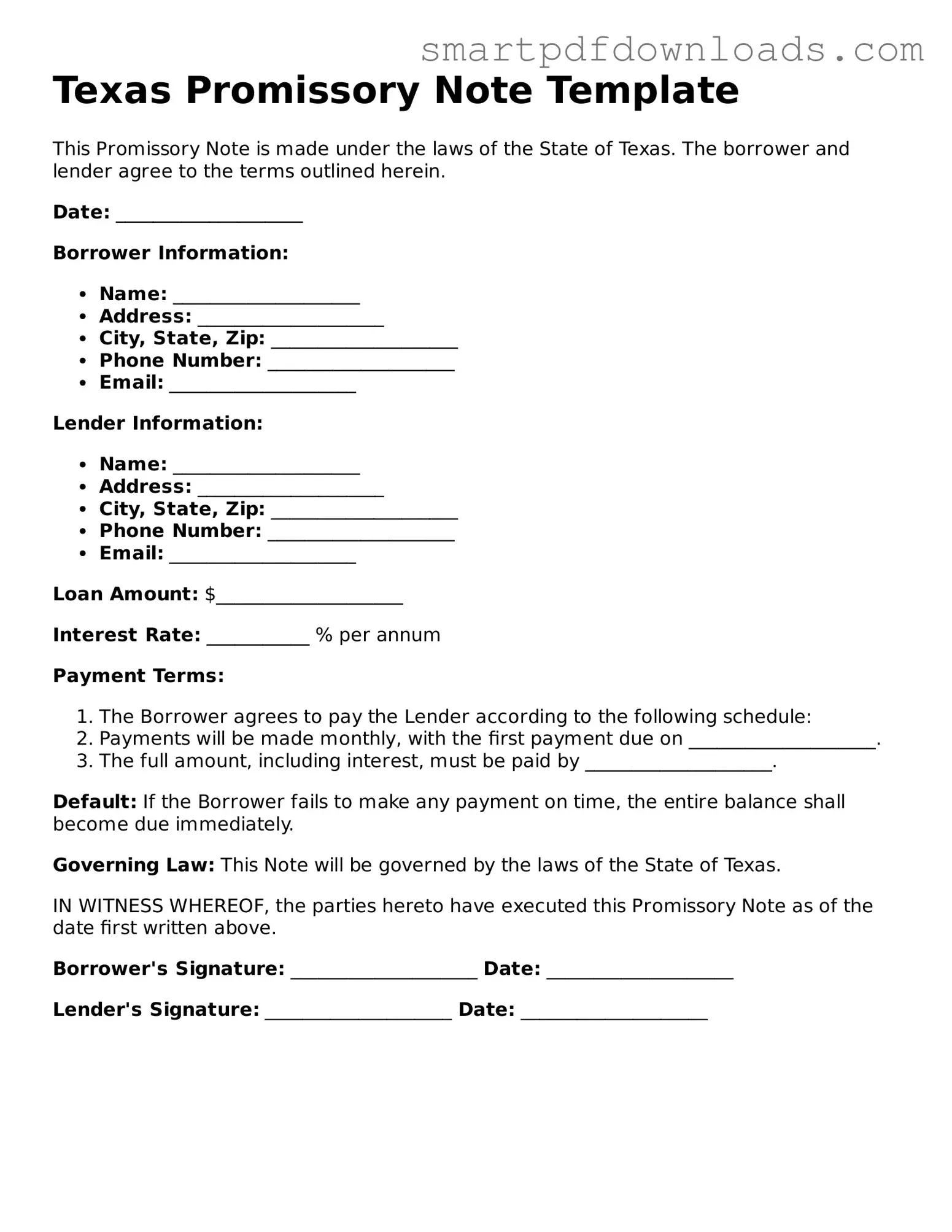Texas Promissory Note Template
This Promissory Note is made under the laws of the State of Texas. The borrower and lender agree to the terms outlined herein.
Date: ____________________
Borrower Information:
- Name: ____________________
- Address: ____________________
- City, State, Zip: ____________________
- Phone Number: ____________________
- Email: ____________________
Lender Information:
- Name: ____________________
- Address: ____________________
- City, State, Zip: ____________________
- Phone Number: ____________________
- Email: ____________________
Loan Amount: $____________________
Interest Rate: ___________ % per annum
Payment Terms:
- The Borrower agrees to pay the Lender according to the following schedule:
- Payments will be made monthly, with the first payment due on ____________________.
- The full amount, including interest, must be paid by ____________________.
Default: If the Borrower fails to make any payment on time, the entire balance shall become due immediately.
Governing Law: This Note will be governed by the laws of the State of Texas.
IN WITNESS WHEREOF, the parties hereto have executed this Promissory Note as of the date first written above.
Borrower's Signature: ____________________ Date: ____________________
Lender's Signature: ____________________ Date: ____________________
